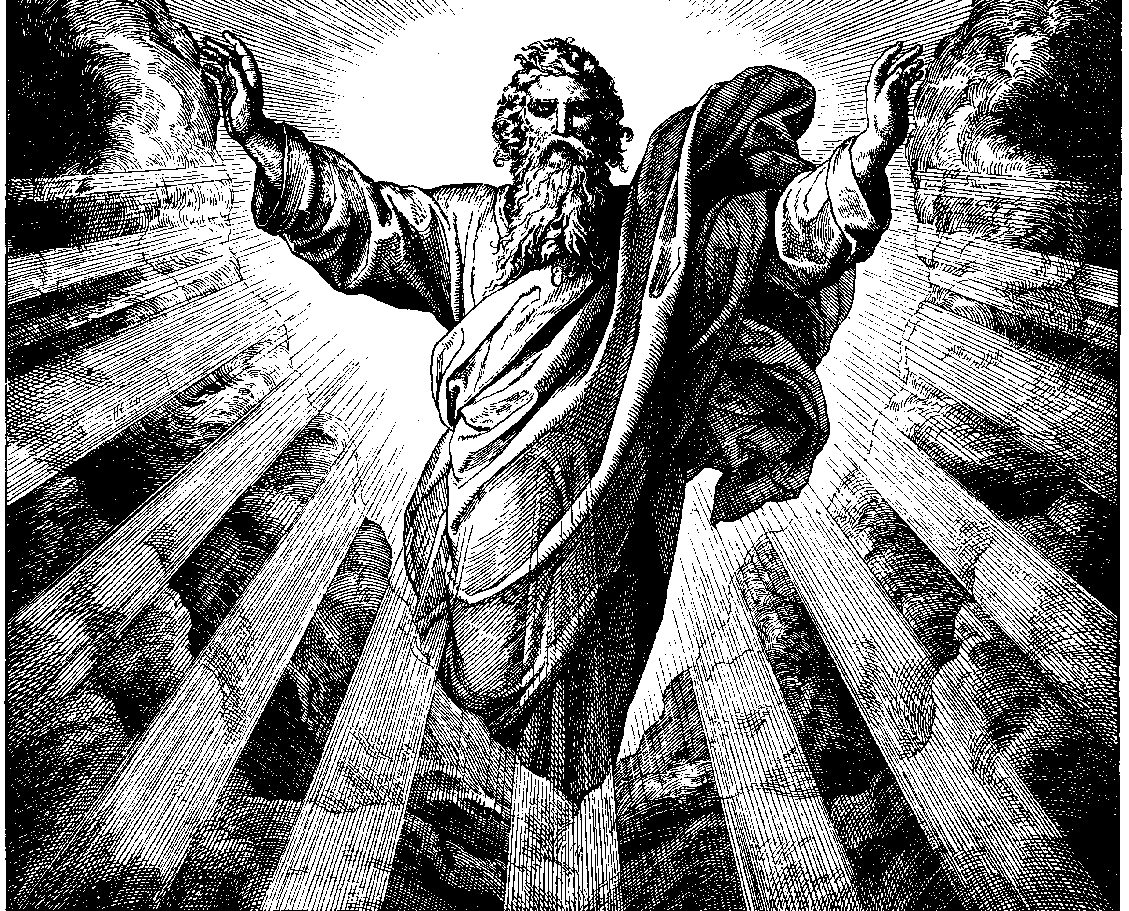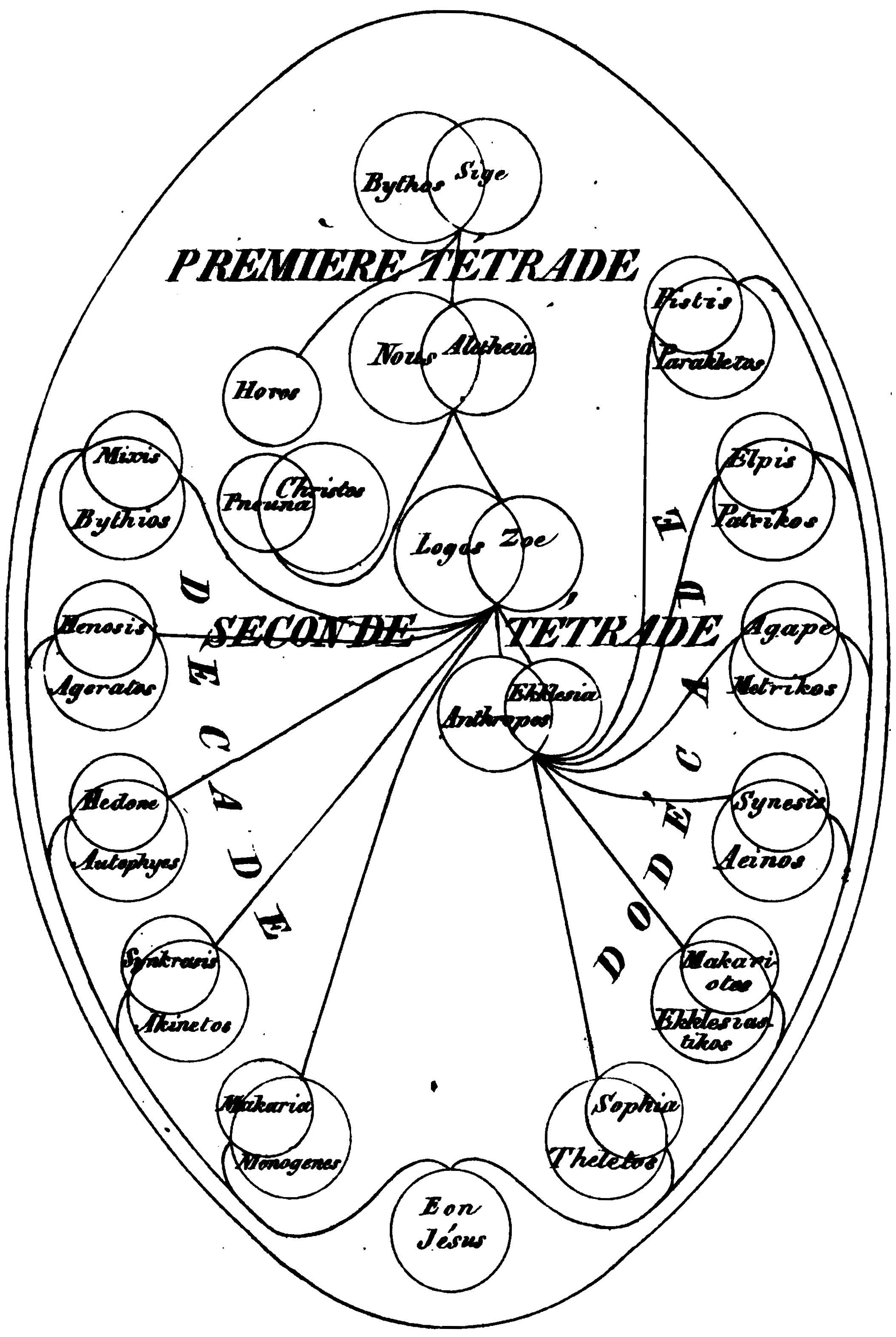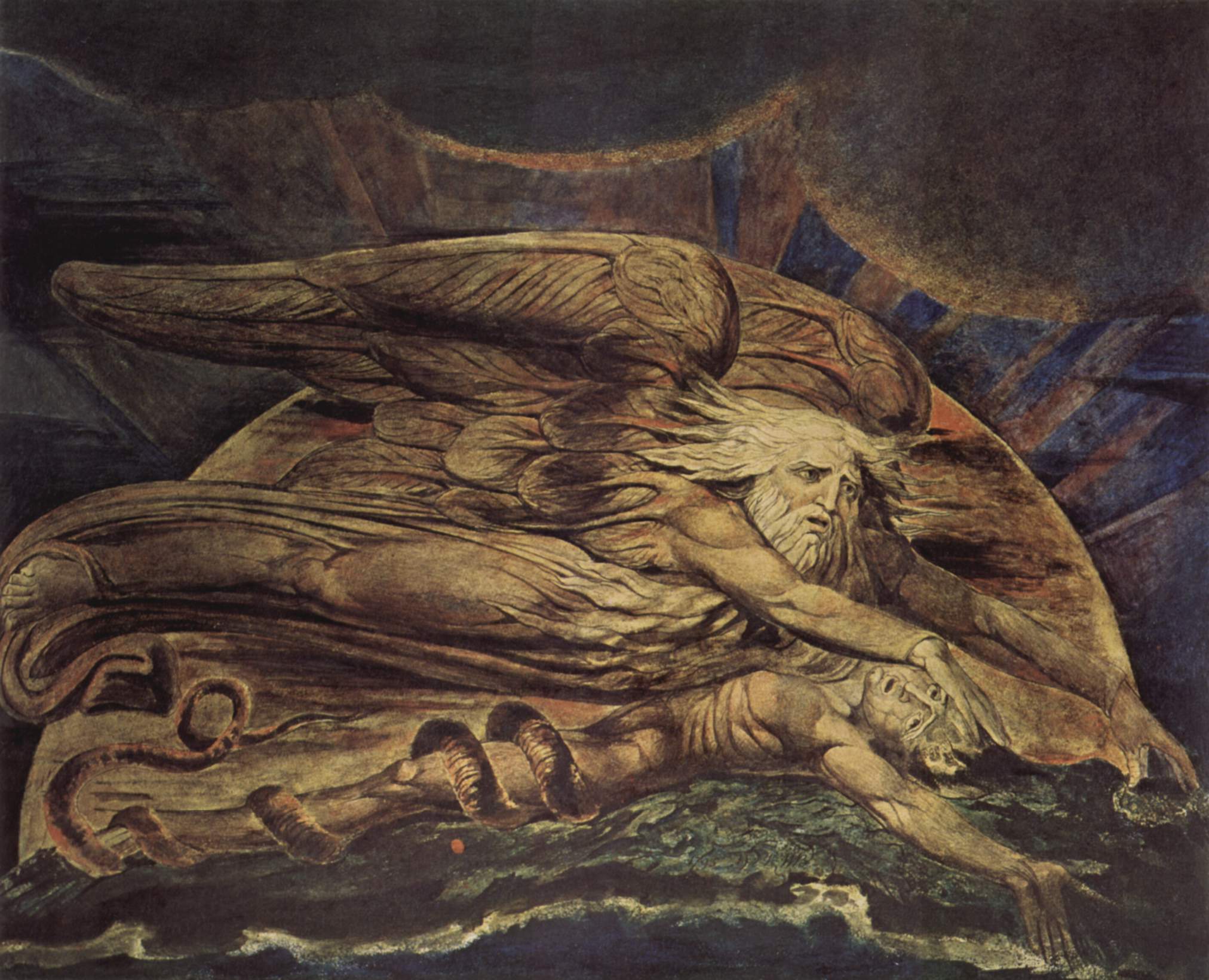|
Interpretation Of Knowledge
The Interpretation of Knowledge is the first tractate from Codex XI of the Nag Hammadi Library. The author emphasizes the importance of unity among members of the Gnostic community. Metaphorically, each part of the body has a specific role, and no one should be jealous or resentful of the role assigned to them. Instead, they should be grateful to belong to the body (of Christ) and have the same head. The author also emphasizes the distinction between the physical body and the spirit, stating that men of God live by the spirit and cannot be found by those who persecute them. The author further states that members of the Gnostic community, as adepts at the Word, are held to a higher standard and will be judged more harshly if they sin against it. However, if they overcome sin, they will receive a crown of victory. Summary The text discusses the belief in the Christ and the importance of faith. The world is seen as a place of unfaith and death, and it is through faith that one can se ... [...More Info...] [...Related Items...] OR: [Wikipedia] [Google] [Baidu] |
Nag Hammadi Library
The Nag Hammadi library (also known as the Chenoboskion Manuscripts and the Gnostic Gospels) is a collection of early Christian and Gnostic texts discovered near the Upper Egyptian town of Nag Hammadi in 1945. Thirteen leather-bound papyrus codices buried in a sealed jar were found by a local farmer named Muhammed al-Samman. The writings in these codices comprise 52 mostly Gnostic treatises, but they also include three works belonging to the '' Corpus Hermeticum'' and a partial translation/alteration of Plato's ''Republic''. In his introduction to ''The Nag Hammadi Library in English'', James Robinson suggests that these codices may have belonged to a nearby Pachomian monastery and were buried after Saint Athanasius condemned the use of non-canonical books in his Festal Letter of 367 A.D. The Pachomian hypothesis has been further expanded by Lundhaug & Jenott (2015, 2018) and further strengthened by Linjamaa (2024). In his 2024 book, Linjamaa argues that the Nag Hammadi l ... [...More Info...] [...Related Items...] OR: [Wikipedia] [Google] [Baidu] |
Gnostic
Gnosticism (from Ancient Greek: , romanized: ''gnōstikós'', Koine Greek: �nostiˈkos 'having knowledge') is a collection of religious ideas and systems that coalesced in the late 1st century AD among early Christian sects. These diverse groups emphasized personal spiritual knowledge ('' gnosis'') above the proto-orthodox teachings, traditions, and authority of religious institutions. Generally, in Gnosticism, the Monad is the supreme God who emanates divine beings; one, Sophia, creates the flawed demiurge who makes the material world, trapping souls until they regain divine knowledge. Consequently, Gnostics considered material existence flawed or evil, and held the principal element of salvation to be direct knowledge of the hidden divinity, attained via mystical or esoteric insight. Many Gnostic texts deal not in concepts of sin and repentance, but with illusion and enlightenment. Gnosticism likely originated in the late first and early second centuries around Alex ... [...More Info...] [...Related Items...] OR: [Wikipedia] [Google] [Baidu] |
Body Of Christ
In Christian theology, the term Body of Christ () has two main but separate meanings: it may refer to Jesus Christ's words over the bread at the celebration of the Jewish feast of Passover that "This is my body" in (see Last Supper), or it may refer to all individuals who are "in Christ" (; see Christian Church). As used by Paul in the Pauline epistles "Body of Christ" refers to all individuals who "heard the word of truth, the gospel of your salvation, believed in him, were sealed with the promised Holy Spirit" (), "are being built together into a dwelling place for God by the Spirit" (), are "joined and held together by every joint with which it is equipped, when each part is working properly, makes the body grow so that it builds itself up in love" (). There are significant differences in how Christians understand the term as used by Christ at the Last Supper and as developed in Christian theology of the Eucharist. For some it may be symbolic, for others it becomes ... [...More Info...] [...Related Items...] OR: [Wikipedia] [Google] [Baidu] |
Logos (Christianity)
In Christianity, the Logos () is a name or title of Jesus in Christianity, Jesus Christ, seen as the Pre-existence of Christ, pre-existent God the Son, second person of the Trinity. In the Douay–Rheims, King James Version, King James, New International Version, New International, and other versions of the Bible, the first verse of the Gospel of John reads: In these translations, ''Word'' is used for , although the term is often used transliterated but untranslated in theological discourse. According to Irenaeus, Irenaeus of Lyon (–202), a student of Polycarp (–156), John the Apostle wrote these words specifically to refute the teachings of Cerinthus, who both resided and taught at Ephesus, the city John settled in following his return from John of Patmos, exile on Patmos. While Cerinthus claimed that the world was made by "a certain Power far separated from ... Almighty God", John, according to Irenaeus, by means of John 1:1-5, presented Almighty God as the Creator ... [...More Info...] [...Related Items...] OR: [Wikipedia] [Google] [Baidu] |
Christ
Jesus ( AD 30 or 33), also referred to as Jesus Christ, Jesus of Nazareth, and many other names and titles, was a 1st-century Jewish preacher and religious leader. He is the Jesus in Christianity, central figure of Christianity, the Major religious groups, world's largest religion. Most Christians consider Jesus to be the Incarnation (Christianity), incarnation of God the Son and awaited Messiah#Christianity, messiah, or Christ (title), Christ, a descendant from the Davidic line that is prophesied in the Old Testament. Virtually all modern scholars of classical antiquity, antiquity agree that Historicity of Jesus, Jesus existed historically. Accounts of Life of Jesus, Jesus's life are contained in the Gospels, especially the four canonical Gospels in the New Testament. Since the Age of Enlightenment, Enlightenment, Quest for the historical Jesus, academic research has yielded various views on the historical reliability of the Gospels and how closely they reflect the hi ... [...More Info...] [...Related Items...] OR: [Wikipedia] [Google] [Baidu] |
Christian Cross
The Christian cross, seen as representing the crucifixion of Jesus, is a religious symbol, symbol of Christianity. It is related to the crucifix, a cross that includes a ''corpus'' (a representation of Jesus' body, usually three-dimensional) and to the more general family of cross, cross symbols. The term '':wikt:cross, cross'' is now detached from its original specifically Christian meaning, in Early Modern English, modern English and many other Western languages. The basic forms of the cross are the Latin cross with unequal arms and the Greek cross with equal arms; there are numerous Christian cross variants, variants, partly with confessional significance—such as the tau cross, the Patriarchal cross, double-barred cross, Papal cross, triple-barred cross, and Jerusalem cross, cross-and-crosslets—and many heraldic cross, heraldic variants, such as the cross potent, cross pattée, and cross moline, cross fleury. Pre-Christian symbolism A version of the cross symbol was use ... [...More Info...] [...Related Items...] OR: [Wikipedia] [Google] [Baidu] |
Crucifixion Of Jesus
The crucifixion of Jesus was the death of Jesus by being crucifixion, nailed to a cross.The instrument of Jesus' crucifixion, instrument of crucifixion is taken to be an upright wooden beam to which was added a transverse wooden beam, thus forming a "cruciform" or T-shaped structure. It occurred in 1st-century Roman Judaea, Judaea, most likely in AD 30 or AD 33. The event is described in the four canonical gospels, referred to in the New Testament epistles, and later attested to by #Other accounts and references, other ancient sources. Scholars nearly universally accept the Historicity of Jesus, historicity of Jesus's crucifixion, although there is no consensus on the details.Christopher M. Tuckett in ''The Cambridge companion to Jesus'' edited by Markus N. A. Bockmuehl 2001 Cambridge Univ Press pp. 123–124 According to the canonical gospels, Jesus was Arrest of Jesus, arrested and Sanhedrin trial of Jesus, tried by the Sanhedrin, and then Pilate's court, sentenced by ... [...More Info...] [...Related Items...] OR: [Wikipedia] [Google] [Baidu] |
God The Father
God the Father is a title given to God in Christianity. In mainstream trinitarian Christianity, God the Father is regarded as the first Person of the Trinity, followed by the second person, Jesus Christ the Son, and the third person, God the Holy Spirit. Since the second century, Christian creeds included affirmation of belief in "God the Father ( Almighty)", primarily in his capacity as "Father and creator of the universe". Christians take the concept of God as the father of Jesus Christ metaphysically further than the concept of God as the creator and father of all people, as indicated in the Apostles' Creed where the expression of belief in the "Father almighty, creator of heaven and earth" is immediately, but separately followed by in "Jesus Christ, his only Son, our Lord", thus expressing both senses of fatherhood. Christianity Overview In much of modern Christianity, God is addressed as the Father, in part because of his active interest in human affairs on the ... [...More Info...] [...Related Items...] OR: [Wikipedia] [Google] [Baidu] |
God The Son
God the Son (, ; ) is the second Person of the Trinity in Christian theology. According to Christian doctrine, God the Son, in the form of Jesus Christ, is the incarnation of the eternal, pre-existent divine ''Logos'' (Koine Greek for "word") through whom all things were created. Although the precise term "God the Son" does not appear in the Bible, it serves as a theological designation expressing the understanding of Jesus as a part of the Trinity, distinct yet united in essence with God the Father and God the Holy Spirit (the first and third Persons of the Trinity respectively). Sources The phrase "God the Son" does not appear in the Bible but is found in later Christian writings. It mistakenly appears in a medieval manuscript, MS No.1985, where Galatians 2:20 has "Son of God" changed to "God the Son". In English, this term comes from Latin usage, as seen in the Athanasian Creed and other early church texts. In Greek, "God the Son" is written as ''ho Theos ho huios'' (ὁ ... [...More Info...] [...Related Items...] OR: [Wikipedia] [Google] [Baidu] |
Aeon (Gnosticism)
In many Gnosticism, Gnostic systems, there are various emanationism, emanations of God, who is known by such names as One, Monad (Gnosticism), Monad, ''Aion teleos'' (αἰών τέλεος "The Broadest Aeon"), Bythos (, "depth" or "profundity"), ''Arkhe'' (, "the beginning"). In Gnosticism these emanations of God are named as ''ARKHIRES'' (, "''before'' the beginning") and as Aeons (which are also often named and may be paired or grouped). In different systems these emanations are differently named, classified, and described (but emanation is common to all forms of 'Gnosticism'). In Basilidian Gnosis they are called sonships (υἱότητες ''huiotetes''; sing.: υἱότης ''huiotes''); according to Marcosians, Marcus, they are numbers and sounds; in Valentinianism they form male/female pairs called syzygies (, from σύζυγοι ''syzygoi'': lit. "yokings together"). This source of all being is an Aeon, in which an inner being dwells, known as ''Ennoea'' (, "thought, in ... [...More Info...] [...Related Items...] OR: [Wikipedia] [Google] [Baidu] |
Adam
Adam is the name given in Genesis 1–5 to the first human. Adam is the first human-being aware of God, and features as such in various belief systems (including Judaism, Christianity, Gnosticism and Islam). According to Christianity, Adam sinned in the Garden of Eden by eating from the tree of the knowledge of good and evil. This action introduced death and sin into the world. This sinful nature infected all his descendants, and led humanity to be expelled from the Garden. Only through the crucifixion of Jesus, humanity can be redeemed. In Islam, Adam is considered '' Khalifa'' (خليفة) (successor) on earth. This is understood to mean either that he is God's deputy, the initiation of a new cycle of sentient life on earth, or both. Similar to the Biblical account, the Quran has Adam placed in a garden where he sins by taking from the Tree of Immortality, so loses his abode in the garden. When Adam repents from his sin, he is forgiven by God. This is seen as a guidan ... [...More Info...] [...Related Items...] OR: [Wikipedia] [Google] [Baidu] |
Gnostic Apocrypha
Gnosticism (from Ancient Greek: , romanized: ''gnōstikós'', Koine Greek: �nostiˈkos 'having knowledge') is a collection of religious ideas and systems that coalesced in the late 1st century AD among early Christian sects. These diverse groups emphasized personal spiritual knowledge (''gnosis'') above the proto-orthodox teachings, traditions, and authority of religious institutions. Generally, in Gnosticism, the Monad is the supreme God who emanates divine beings; one, Sophia, creates the flawed demiurge who makes the material world, trapping souls until they regain divine knowledge. Consequently, Gnostics considered material existence flawed or evil, and held the principal element of salvation to be direct knowledge of the hidden divinity, attained via mystical or esoteric insight. Many Gnostic texts deal not in concepts of sin and repentance, but with illusion and enlightenment. Gnosticism likely originated in the late first and early second centuries around Alexandria, ... [...More Info...] [...Related Items...] OR: [Wikipedia] [Google] [Baidu] |









